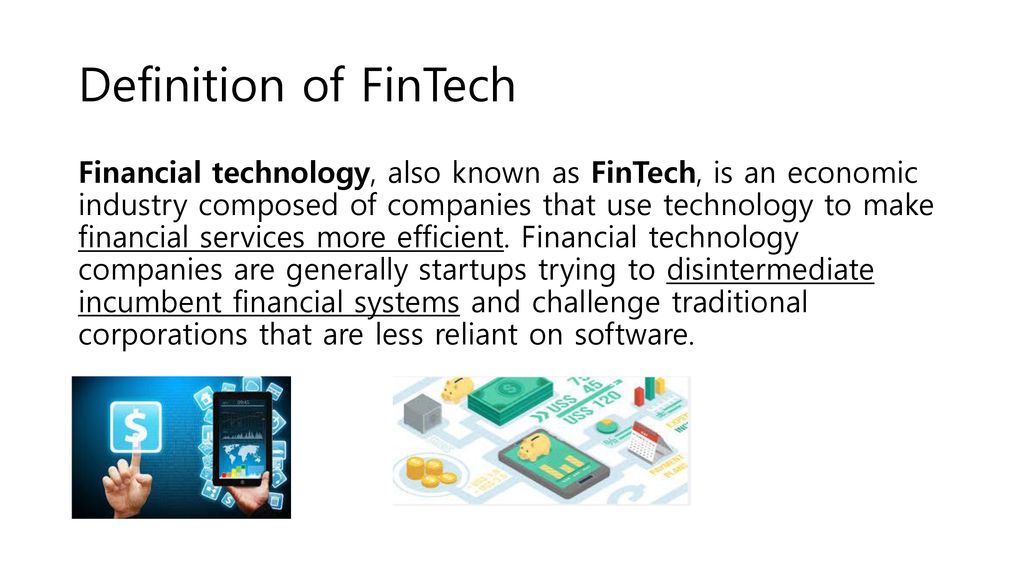Introduction
The insurance industry plays a critical role in managing risks and providing financial protection to individuals and businesses. However, it is not immune to its own set of challenges, including data security, fraud prevention, and inefficiencies in the underwriting and claims processing processes. In recent years, a groundbreaking technology called blockchain has emerged as a potential solution to address these issues and revolutionize the insurance landscape.
Blockchain, commonly associated with cryptocurrencies like Bitcoin, is a decentralized digital ledger that records and verifies transactions across multiple computers. Unlike traditional centralized systems, blockchain offers increased transparency, immutability, and security, making it an ideal technology for insurance companies to leverage.
By harnessing the power of blockchain, insurance companies can streamline operations, enhance data security and privacy, simplify claims processing, and ensure trust and transparency in their interactions with policyholders and other stakeholders.
This article explores how insurance companies can utilize blockchain to transform their operations, improve customer experience, and drive efficiency in the insurance value chain.
What is blockchain?
Blockchain is a revolutionary technology that is changing the way transactions are recorded, verified, and secured. At its core, a blockchain is a decentralized and distributed digital ledger that records and stores information across a network of computers, known as nodes. Each node in the network has a copy of the entire blockchain, ensuring transparency and eliminating the need for intermediaries.
Transactions on a blockchain are grouped into blocks, which are then added to the existing chain in a chronological order, creating a permanent and unalterable record. Each block contains a unique hash, a digital fingerprint, that links it to the previous block, forming a chain. This chain of blocks ensures that any tampering or alteration of data is easily recognizable, making blockchain highly secure and resistant to fraud.
One of the key features of blockchain is its consensus mechanism, which ensures that all participants in the network agree on the validity of transactions before they are added to the ledger. This consensus is typically achieved through a process known as mining, where participants, or miners, compete to solve complex mathematical puzzles to validate transactions and add them to the blockchain. The miner who successfully solves the puzzle is rewarded with a cryptocurrency or transaction fees.
Blockchain technology offers several advantages over traditional centralized systems. Firstly, it provides transparency, as all transactions are visible to every participant in the network. Secondly, it offers immutability, meaning that once a transaction is recorded on the blockchain, it cannot be changed or deleted without the consensus of the network. Lastly, blockchain is highly secure due to its decentralized nature and cryptographic algorithms.
While blockchain was popularized as the underlying technology for cryptocurrencies, its potential applications extend far beyond the realm of finance. The decentralized and transparent nature of blockchain makes it suitable for various industries, including supply chain management, healthcare, real estate, and of course, insurance.
Now that we have a basic understanding of what blockchain is, let’s delve into how insurance companies can leverage this technology to their advantage.
The Benefits of Blockchain for Insurance Companies
The integration of blockchain technology offers numerous benefits and opportunities for insurance companies. By leveraging its unique features, insurance companies can enhance their operations, improve customer experience, and drive efficiency in the insurance value chain.
Enhanced Data Security and Privacy: One of the key advantages of blockchain for insurance companies is its ability to enhance data security and privacy. Traditional databases are vulnerable to hacking and data breaches, which can expose sensitive customer information. Blockchain’s decentralized nature and cryptographic algorithms make it highly secure and resistant to tampering. Each transaction is encrypted and linked to the previous transaction, creating a transparent and traceable audit trail. This ensures that customer data remains secure and confidential.
Smart Contracts and Claims Processing: Blockchain technology enables the implementation of smart contracts, which can automate and streamline various insurance processes, including claims processing. Smart contracts are self-executing contracts with terms and conditions written in code. They automatically execute when predefined conditions are met, eliminating the need for manual intervention or third-party intermediaries. This automated claims processing minimizes paperwork, reduces errors, and speeds up the settlement process, providing a seamless and efficient experience for policyholders.
Fraud Prevention and Detection: Fraud is a significant challenge for the insurance industry, leading to billions of dollars in losses each year. Blockchain can play a crucial role in preventing and detecting insurance fraud. Due to its immutability and transparency, blockchain provides a secure and tamper-proof platform for storing and verifying policyholder information, claims data, and transactions. This can help insurance companies identify and prevent fraudulent activities, such as multiple claims for the same incident or falsified documents.
Faster and More Transparent Underwriting Process: The underwriting process in insurance involves assessing risk and determining policy terms. It is a time-consuming and complex process that often involves multiple parties and large amounts of data. Blockchain can simplify and expedite the underwriting process by providing a shared platform where insurers, reinsurers, and other stakeholders can access and verify information in real-time. This reduces administrative burdens, improves accuracy, and enables faster policy issuance, resulting in a more efficient underwriting process.
Improved Customer Experience: Blockchain technology has the potential to revolutionize the customer experience in the insurance industry. By eliminating paperwork, reducing processing times, and providing greater transparency, policyholders can enjoy a seamless and user-friendly experience when purchasing insurance, submitting claims, and managing their policies. Additionally, the secure and transparent nature of blockchain can instill trust and confidence in customers, enhancing their overall satisfaction with insurance companies.
Cost Reduction and Efficiency: Adopting blockchain technology can lead to significant cost savings and operational efficiencies for insurance companies. By automating processes, reducing manual intervention, and eliminating intermediaries, companies can streamline their operations, reduce administrative costs, and achieve faster and more accurate outcomes. Additionally, the elimination of fraud and improved risk assessment through blockchain can result in lower claim payouts and better risk management practices.
Overall, blockchain technology offers immense potential for insurance companies to transform their operations and provide enhanced services to their customers. The next section will explore some of the challenges and considerations that insurance companies need to address when implementing blockchain solutions.
Enhanced Data Security and Privacy
Ensuring the security and privacy of customer data is of utmost importance for insurance companies. The integration of blockchain technology can significantly enhance data security and privacy measures, providing a robust and trustworthy solution.
Blockchain’s decentralized nature eliminates the need for a central authority or intermediary to manage and store data. Instead, data is distributed across multiple nodes in the network, making it difficult for hackers or malicious actors to breach the system. Each transaction recorded on the blockchain is encrypted and linked to the previous transaction, creating a transparent and tamper-proof audit trail.
The immutability of blockchain makes it impossible to alter or delete data without the consensus of the network. Once a transaction is recorded on the blockchain, it becomes a permanent part of the ledger. This feature ensures data integrity, providing a high level of trust and confidence in the accuracy and authenticity of information.
Furthermore, blockchain’s cryptographic algorithms ensure that sensitive customer data is securely stored and transmitted. Personal information, such as policyholder details, claims data, and financial transactions, can be encrypted and stored on the blockchain, rendering it unreadable and useless to unauthorized individuals.
Additionally, blockchain technology provides policyholders with more control and ownership over their personal data. Instead of relying on insurance companies to safeguard their information, policyholders can access and control their data through a secure digital identity stored on the blockchain. This empowers individuals to manage their data privacy preferences and grant permission to specific entities when necessary.
By implementing blockchain, insurance companies can effectively mitigate the risks associated with data breaches and improve compliance with privacy regulations, such as the General Data Protection Regulation (GDPR). The transparency and traceability offered by blockchain can facilitate audits and ensure accountability in handling personal data, minimizing the potential for unauthorized access or data misuse.
Nevertheless, it is essential for insurance companies to consider the challenges and potential drawbacks associated with enhanced data security and privacy on the blockchain. While the technology itself provides a secure platform, vulnerabilities may still exist in the systems and applications that interface with the blockchain. Therefore, robust cybersecurity measures and protocols need to be implemented to safeguard against potential threats.
Moreover, insurance companies need to navigate the balance between data security and privacy, as the push for transparency on the blockchain may conflict with protecting confidential customer information. Striking the right balance requires a thorough understanding of existing data privacy laws and regulations, as well as implementing appropriate encryption and access controls.
In summary, the integration of blockchain technology can offer insurance companies an enhanced level of data security and privacy. By leveraging blockchain’s decentralized and immutable nature, insurance companies can ensure the integrity, confidentiality, and authenticity of customer data while empowering policyholders with more control over their personal information.
Smart Contracts and Claims Processing
Smart contracts are one of the most promising applications of blockchain technology in the insurance industry. These self-executing contracts, encoded with predefined terms and conditions, automate and streamline the claims processing process, leading to increased efficiency and accuracy.
Traditionally, claims processing in insurance involves multiple parties, extensive paperwork, and manual verification processes. This often leads to delays, errors, and added administrative costs. Smart contracts, built on blockchain technology, offer a transparent and automated solution to address these challenges.
With smart contracts, the claims process becomes more efficient and streamlined. When an insurance policy is triggered, such as an accident or property damage, the smart contract automatically verifies the conditions for the claim to be valid. This eliminates the need for manual intervention and reduces the time and resources required to process the claim.
Smart contracts can access and validate relevant data stored on the blockchain, such as policy information, claim history, and supporting documents. This ensures that the claims process is based on accurate and reliable information, minimizing the risk of errors or fraudulent claims.
Once the claim is deemed valid, the smart contract can automatically initiate the payment process. The policyholder receives the settlement amount directly in their designated account, eliminating the need for manual processing and reducing the time it takes to receive the payout.
The transparency of blockchain ensures that all stakeholders involved in the claims process, including the insurance company, policyholder, and third-party service providers, have access to the same information. This transparency reduces disputes, enhances trust, and promotes fair and efficient claims settlement.
Furthermore, the use of blockchain and smart contracts can help combat insurance fraud. The traceability and immutability of blockchain records make it difficult for fraudsters to manipulate or falsify claims data. Smart contracts can automatically detect suspicious patterns or inconsistencies in claims, triggering further investigations if necessary.
However, the adoption of smart contracts in insurance is not without its challenges. The complexity of insurance contracts and the variety of claim scenarios require careful consideration when encoding the terms and conditions into the smart contract. Legal and regulatory frameworks also need to be taken into account to ensure compliance.
Insurance companies must invest in robust and secure smart contract auditing mechanisms to ensure the accuracy and reliability of the encoded rules. This will help mitigate the risk of vulnerabilities or loopholes being exploited by malicious actors.
In summary, smart contracts have the potential to revolutionize claims processing in the insurance industry. Through automation, transparency, and accuracy, smart contracts can streamline the claims process, enhance efficiency, and minimize the risk of fraud. As insurance companies continue to explore the possibilities of blockchain technology, smart contracts are set to play a crucial role in transforming the insurance landscape.
Fraud Prevention and Detection
Fraud prevention and detection are significant challenges for the insurance industry, costing billions of dollars each year. However, the integration of blockchain technology offers unprecedented opportunities to combat fraudulent activities, improve trust, and safeguard the integrity of insurance operations.
Blockchain’s inherent features, such as immutability, transparency, and decentralized consensus, provide a robust framework for preventing and detecting fraud in the insurance industry.
One of the primary benefits of blockchain in fraud prevention is its ability to create a tamper-proof and transparent ledger of transactions. All policy-related information, claims data, and transactions are recorded on the blockchain, ensuring that they cannot be altered or manipulated without the consensus of the network.
This immutability of blockchain records serves as an invaluable asset in detecting fraudulent activities. Any attempt to tamper with or manipulate data becomes immediately apparent, as it would require altering multiple blocks in the chain, which is practically impossible due to the computational power required.
Additionally, the decentralized nature of blockchain ensures that multiple copies of the ledger are stored across the network of nodes. This eliminates the risk of a single point of failure or unauthorized modifications to data. Moreover, the transparency of blockchain allows all stakeholders in the insurance ecosystem, including policyholders, insurers, and regulators, to access and verify the authenticity of transactions and claims data.
Smart contracts, built on blockchain technology, also play a crucial role in fraud prevention and detection. These self-executing contracts can automate various processes and enforce predefined rules, reducing the opportunity for fraudulent activities. Smart contracts can automatically verify claim conditions, flag suspicious patterns, and trigger further investigation if necessary.
Through blockchain technology, insurance companies can create a more comprehensive and accurate profile of policyholders. This includes valuable information such as policy history, previous claims, and relevant third-party data. By leveraging blockchain’s immutable and decentralized characteristics, insurance companies can establish trust in the authenticity and accuracy of this data, making it more challenging for fraudsters to provide false or misleading information.
Furthermore, blockchain technology enables the secure sharing of data and information across different parties involved in the insurance ecosystem. This can help detect and prevent fraudulent activities, such as multiple claims for the same incident or falsification of policyholder information.
However, it is important to recognize that while blockchain technology can significantly enhance fraud prevention and detection measures, it is not a foolproof solution. Insurance companies must remain vigilant and employ other complementary measures, such as advanced analytics, machine learning, and human expertise, to effectively combat evolving fraud tactics.
Overall, the integration of blockchain technology has great potential to revolutionize fraud prevention and detection in the insurance industry. By leveraging the immutable and transparent nature of blockchain, insurance companies can establish trust, enhance data integrity, and create a more secure and fraud-resistant environment.
Faster and More Transparent Underwriting Process
The underwriting process is a critical component of the insurance value chain, involving the assessment of risks and the determination of policy terms. However, this process has traditionally been time-consuming, complex, and prone to inefficiencies. By leveraging blockchain technology, insurance companies can significantly streamline the underwriting process, making it faster, more accurate, and transparent.
One of the key advantages of blockchain in underwriting is the ability to access and verify data in real-time. Traditionally, underwriters rely on numerous sources of information, such as medical records, credit scores, and driving records, which may require significant time and effort to obtain and review. With blockchain, relevant data can be securely stored and accessed on the distributed ledger, enabling underwriters to make informed decisions instantly.
The transparency of blockchain allows all relevant stakeholders, including insurance companies, underwriters, and reinsurers, to access and verify the accuracy and authenticity of data. This eliminates the need for multiple entities to independently request and verify the same information, streamlining the process and reducing redundancies.
Moreover, blockchain technology enables the creation of a shared platform where insurers, reinsurers, and other participants in the underwriting process can interact and collaborate. This improves communication, reduces delays, and enhances the overall efficiency of the underwriting process.
Smart contracts, built on blockchain, can also automate and enforce predefined rules and conditions for policy issuance. This eliminates manual intervention, reduces paperwork, and ensures consistency and accuracy in the underwriting process. By automating routine tasks, underwriters can focus more on complex risk assessment, leading to better decision-making and improved outcomes.
The verification and validation of data on the blockchain are done through a consensus mechanism, ensuring the accuracy and integrity of information. Underwriters can have confidence in the reliability of data on the blockchain, reducing the need for extensive manual verification and reducing the risk of errors.
Furthermore, the immutability of blockchain records ensures an auditable trail of underwriting decisions and changes made throughout the process. This enhances accountability and facilitates regulatory compliance, as the history of each decision and the reasoning behind it are transparently recorded on the blockchain.
Through the use of blockchain technology, the underwriting process becomes more transparent and accountable. Policyholders can have a clear understanding of how their policies are priced and what factors contribute to their premiums. This promotes trust and enhances the overall customer experience.
However, insurance companies need to be mindful of the challenges and considerations in implementing a faster and more transparent underwriting process on the blockchain. Integration with existing legacy systems, data privacy concerns, and regulatory compliance are important factors to address during the implementation phase.
In summary, blockchain technology offers insurance companies the potential to revolutionize the underwriting process, making it faster, more transparent, and efficient. By leveraging real-time data access, automation of routine tasks, and transparent verification, insurance companies can enhance their underwriting capabilities and improve their overall business operations.
Improved Customer Experience
Customer experience is a key differentiator for insurance companies in today’s competitive market. The integration of blockchain technology offers significant opportunities to enhance the customer experience, providing policyholders with a seamless and user-friendly insurance journey.
One of the primary ways blockchain improves the customer experience is by eliminating paperwork and reducing administrative burdens. Traditionally, insurance processes involve extensive documentation, form filling, and manual record-keeping. With blockchain, policyholders can have their information securely stored on the distributed ledger, eliminating the need for repetitive paperwork and enabling quick and convenient access to their policy details and claims history.
By leveraging blockchain’s transparency, insurance companies can provide customers with clear and accurate information about their policies. Policyholders can have visibility into policy terms, coverage, and premiums, thus enabling them to make informed decisions and understand the value they receive from their insurance provider.
In the event of a claim, blockchain can streamline the claims process and provide policyholders with faster settlements. Smart contracts, built on blockchain, can automate the claims process, eliminating the need for manual intervention. Once a claim is approved through the predefined rules encoded in the smart contract, payment is automatically triggered, leading to quicker and more efficient claim settlements.
The transparency of blockchain also enhances trust and customer confidence. Policyholders can view the entire history of their policy and claims on the blockchain, ensuring a transparent and auditable trail of transactions. This level of transparency instills confidence in the insurance process and reduces the perceived opacity often associated with insurance companies.
Blockchain’s immutability provides an added layer of security and trust for policyholders. Policy information and claims data stored on the blockchain cannot be tampered with, ensuring the accuracy and integrity of the customer’s records.
Moreover, blockchain can facilitate the development of personalized insurance products and services. The data stored on the blockchain, when consented by the policyholder, can provide valuable insights into their behavior, risks, and preferences. This data can be used to tailor insurance offerings to meet the specific needs of policyholders, resulting in a more personalized and relevant customer experience.
Additionally, the decentralized nature of blockchain technology empowers policyholders to have greater control over their data. Instead of relying on insurance companies to manage and protect their personal information, blockchain allows policyholders to maintain ownership and permission-based access to their data. This enhances privacy and data security, giving policyholders peace of mind.
However, it is essential for insurance companies to ensure that policyholders fully understand the benefits and implications of blockchain technology. Educating customers about the features and advantages of blockchain can help enhance their trust and confidence in the insurance industry’s adoption of this technology.
In summary, blockchain technology offers insurance companies the opportunity to improve the customer experience. By reducing administrative burdens, streamlining claims processing, enhancing transparency, and providing personalized offerings, blockchain can transform the way insurance is perceived and experienced by policyholders.
Cost Reduction and Efficiency
Cost reduction and operational efficiency are key objectives for insurance companies seeking to improve their bottom line and provide competitive offerings. Blockchain technology offers significant potential to achieve these goals by streamlining processes, eliminating intermediaries, and enhancing automation and accuracy.
One of the primary ways blockchain can drive cost reduction is by eliminating the need for intermediaries. Traditionally, insurance processes involve multiple intermediaries such as brokers, underwriters, and reinsurers, leading to additional fees and administrative costs. By leveraging blockchain’s decentralized and transparent nature, insurance companies can directly interact with policyholders and other stakeholders, reducing the reliance on costly intermediaries.
Moreover, the automation capabilities of blockchain technology can significantly reduce manual intervention and paperwork, leading to cost savings. Smart contracts, built on blockchain, automate routine tasks, such as policy issuance, claims processing, and premium calculations. This automation eliminates the need for manual data entry, reduces errors, and accelerates the entire process, resulting in higher operational efficiency and lower administrative costs.
The transparency and visibility provided by blockchain enable better risk assessment and management. Insurance companies can access real-time and verifiable data, enabling more accurate pricing and underwriting decisions. This reduces the risk of underpricing or overpricing policies, resulting in optimized risk management and improved profitability.
Blockchain’s immutability ensures the integrity of insurance records and reduces the risk of fraud. Insurance companies can minimize fraudulent claims and associated costs by leveraging the transparency and traceability provided by blockchain technology. The ability to detect and prevent fraudulent activities can result in significant cost savings for insurance companies.
Furthermore, blockchain promotes data accuracy and integrity. The decentralized nature of blockchain ensures that data is verified and validated by multiple parties on the network, reducing the risk of inaccurate or inconsistent information. This accuracy minimizes disputes and rework, leading to greater efficiency and cost savings.
Blockchain’s real-time data access and interoperability facilitate seamless collaboration between insurance companies, reinsurers, and other stakeholders. By securely sharing data on a common platform, participants can streamline communication, reduce redundancies, and eliminate the need for data reconciliation. This collaboration and data sharing lead to improved operational efficiency and cost reduction across the insurance value chain.
However, it is essential for insurance companies to consider the initial investment and implementation costs associated with adopting blockchain technology. Upgrading existing systems, training employees, and ensuring compatibility with legacy infrastructure are important factors to consider. Nonetheless, the potential long-term cost savings and efficiency gains make blockchain a compelling investment for insurance companies.
In summary, blockchain technology offers insurance companies the opportunity to achieve significant cost reductions and operational efficiency. By eliminating intermediaries, automating processes, enhancing data accuracy, and reducing fraud, blockchain can optimize operational costs and improve profitability, helping insurance companies stay competitive in the rapidly evolving industry.
Challenges and Considerations
While blockchain technology offers numerous benefits for insurance companies, its adoption is not without challenges and considerations. It is essential for insurance companies to carefully navigate these obstacles to successfully implement blockchain solutions and reap its advantages.
Regulatory and Legal Implications: The regulatory landscape surrounding blockchain and cryptocurrencies is still evolving in many jurisdictions. Insurance companies need to navigate the legal and regulatory requirements associated with implementing blockchain technology. Compliance with data protection, privacy, and Know Your Customer (KYC) regulations is of utmost importance to ensure the secure handling of customer information within the blockchain framework.
Integration with Existing Systems and Processes: Insurance companies often operate complex systems and processes that have been developed over years or even decades. Integrating blockchain technology into existing infrastructure can be a challenge. Compatibility issues, data migration, and the need for collaboration with legacy systems need to be carefully addressed to ensure a smooth integration.
Scalability and Performance: Blockchain technology, especially public blockchains, can experience scalability and performance limitations. As the number of transactions increases, public blockchains may face challenges in handling the volume efficiently. Insurance companies need to consider the scalability and performance implications of blockchain implementations to ensure that the technology can handle the demands of their business operations.
Standardization and Interoperability: The lack of standardized protocols and frameworks for blockchain implementation in the insurance industry poses a challenge. Insurance companies may need to collaborate with industry stakeholders, regulators, and technology providers to establish common standards and ensure interoperability across different blockchain platforms and networks.
Education and Adoption: Blockchain is a relatively new and complex technology. The successful adoption of blockchain in the insurance industry relies on educating stakeholders, employees, and customers about its benefits and implications. Insurance companies need to invest in training programs and awareness campaigns to foster understanding and acceptance of blockchain technology within the organization and among customers.
Security Concerns: While blockchain provides enhanced security through its cryptographic algorithms and decentralized nature, it is not immune to security vulnerabilities. Issues such as private key management, denial-of-service attacks, and smart contract exploits need to be carefully addressed to mitigate potential risks. Robust cybersecurity measures and ongoing monitoring are critical to ensuring the security of blockchain implementations.
Costs and Return on Investment: Implementing blockchain technology requires significant investment in infrastructure, development, and training. Insurance companies need to carefully evaluate the costs and potential return on investment to ensure that the benefits of blockchain outweigh the initial and ongoing expenses involved.
By proactively addressing these challenges and considerations, insurance companies can develop effective strategies to successfully implement blockchain technology and maximize its potential to transform their operations and improve customer experiences.
Regulatory and Legal Implications
As insurance companies explore the integration of blockchain technology, they must navigate the regulatory and legal landscape to ensure compliance and mitigate potential risks. The adoption of blockchain in the insurance industry raises several considerations related to data protection, privacy, and regulatory frameworks.
Data Protection and Privacy: Blockchain technology operates on the principle of immutability, where once a transaction is recorded, it cannot be altered or deleted. This poses challenges in complying with data protection regulations, such as the European Union’s General Data Protection Regulation (GDPR), which grants individuals the right to erasure and the ability to control their personal data. Insurance companies must ensure that blockchain implementations align with the necessary privacy requirements and provide mechanisms to address the rights of data subjects.
Know Your Customer (KYC) and Anti-Money Laundering (AML) Compliance: Insurance companies are bound to strict regulations regarding customer due diligence and the prevention of money laundering and terrorism financing. Implementing blockchain technology should consider integrating processes and mechanisms for identity verification, such as digital identity solutions, to adhere to KYC and AML requirements.
Smart Contracts and Legal Validity: Smart contracts, which automate and execute predefined rules and conditions on the blockchain, introduce legal considerations. Ensuring the legal validity and enforceability of smart contracts requires careful alignment with existing legal frameworks. Contract law may require adaptations to consider the unique attributes of blockchain technology, address dispute resolution mechanisms, enforce liability, and specify the jurisdiction and governing law applicable to smart contracts.
Jurisdiction and Cross-Border Transactions: Blockchain technology knows no geographical boundaries, enabling cross-border transactions with ease. However, this introduces challenges in terms of regulatory jurisdiction and compliance with international laws. Insurance companies must consider the legal implications of conducting business across different jurisdictions and ensure compliance with local regulations, tax requirements, and licensing obligations.
Intellectual Property (IP) and Licensing: Blockchain technology often involves the development of innovative solutions, new protocols, or industry-specific frameworks. Protecting intellectual property and addressing licensing rights for the use of blockchain technology or associated applications are important considerations. Insurance companies must navigate the legal landscape to secure their IP assets and respect the intellectual property rights of others in the blockchain ecosystem.
Contractual Agreements and Smart Legal Contracts: Traditional contractual agreements may need to be adapted to accommodate the capabilities and effects of smart contracts. Insurance companies must ensure contractual clarity, including the integration and compatibility of traditional and smart contracts. Legal frameworks should be flexible enough to recognize the unique aspects of smart contracts and address the potential risks and liabilities associated with their execution.
Navigating the regulatory and legal implications of blockchain technology in the insurance industry requires collaboration between insurance companies, regulators, legal experts, and technology providers. Establishing clear guidelines, industry standards, and legal frameworks can help create an environment that fosters innovation while ensuring compliance and protecting the interests of all stakeholders involved.
Integration with Existing Systems and Processes
Integrating blockchain technology with existing systems and processes is a crucial consideration for insurance companies. Migrating to a blockchain-based infrastructure involves compatibility challenges, system upgrades, and the alignment of business processes to fully leverage the benefits of blockchain.
Compatibility and Interoperability: Insurance companies operate complex systems and legacy infrastructure that have been developed over many years. Integrating blockchain technology into existing systems requires compatibility and interoperability. The blockchain solution should be able to seamlessly integrate and communicate with various databases, applications, and systems to ensure smooth operations and data flow.
Data Migration and Consistency: Blockchain implementations often involve the migration of data from traditional databases to the blockchain. Ensuring the consistency and accuracy of data during the migration process is critical. Insurance companies need to plan and execute data migration strategies to avoid discrepancies or data integrity issues that could affect business operations.
Business Process Alignment: Blockchain-based solutions offer the potential to automate and streamline business processes. However, insurance companies need to assess and align their existing processes with the capabilities of blockchain technology. This may involve reengineering certain processes to eliminate redundancies, optimize efficiency, and fully leverage the benefits of blockchain in terms of transparency, security, and automation.
Training and Employee Adoption: Introducing blockchain technology requires adequate training and education for employees across the organization. Staff members must understand the underlying principles of blockchain, its potential benefits, and how to effectively utilize blockchain-based solutions. Training programs should be developed to bridge the knowledge gap and ensure a smooth transition to the new technology.
Legacy System Support: During the integration phase, insurance companies may still need to support existing legacy systems to ensure business continuity. A phased approach, where blockchain is gradually integrated with existing systems, can help address dependencies and minimize disruptions. Maintaining support for legacy systems during the transition period allows for a smoother transition and a controlled migration process.
Partnerships and Collaborations: Insurance companies may need to collaborate with technology vendors, partners, and industry stakeholders to effectively integrate blockchain technology. Engaging in partnerships and collaborations can help leverage external expertise, access to specialized platforms, and potential cost-sharing opportunities. Working together with technology providers and industry peers can facilitate a successful integration journey.
Scalability and Performance: Insurance companies must consider the scalability and performance implications when integrating blockchain technology into existing systems. As transaction volumes increase, blockchain networks need to scale and handle the load efficiently. Solutions such as utilizing scalable infrastructure or implementing sidechains can help address scalability challenges and ensure optimal performance.
Successfully integrating blockchain technology with existing systems and processes requires careful planning, collaboration, and a well-defined roadmap. Insurance companies should assess their current infrastructure, analyze the specific integration requirements, and develop an implementation strategy that addresses compatibility, data migration, process alignment, training, and scalability considerations.
Collaboration and Partnerships
Collaboration and partnerships play a vital role in driving the successful adoption and implementation of blockchain technology in the insurance industry. Connecting with stakeholders, technology providers, and industry peers can bring valuable expertise, foster innovation, and address challenges collectively.
Technology Providers: Collaborating with technology providers specializing in blockchain can help insurance companies navigate the complexities of implementing blockchain solutions. These providers offer expertise in blockchain development, infrastructure, and security, ensuring that the chosen technology aligns with the specific needs of the insurance industry. Working closely with technology providers can expedite the integration process and provide a solid foundation for blockchain adoption.
Industry Peers and Consortia: Joining industry consortia or alliances focused on blockchain technology enables insurance companies to collaborate with competitors, regulators, and other stakeholders. These consortia promote knowledge sharing, standardization efforts, and the exploration of blockchain use cases. By actively participating in industry collaborations, insurance companies can collectively address common challenges and influence the development of industry-specific blockchain standards and frameworks.
Regulators and Government Entities: Engaging with regulators and government entities is critical for the adoption of blockchain technology in the insurance industry. Collaborating with regulators allows insurance companies to address regulatory concerns, ensure compliance, and provide input into the development of policies related to blockchain applications. Insurance companies can also seek guidance and clarity from regulatory bodies on legal and compliance issues associated with blockchain integration.
Endorsements and Industry Associations: Endorsements and support from industry associations, trade bodies, and influential stakeholders can provide credibility and confidence to insurance companies in their blockchain initiatives. By actively participating in industry conferences, events, and forums, insurance companies can build relationships, share experiences, and gain industry-wide recognition for their blockchain projects. These industry partnerships can also enhance collaborations and widen the network of potential technology providers and collaborators.
Startups and Innovators: Collaborating with startups and innovators in the blockchain space can offer fresh perspectives, cutting-edge technologies, and new business models. Startups often bring agility and creative solutions to the table, enabling insurance companies to explore unique blockchain use cases and develop innovative applications. Through partnerships with startups, insurance companies can leverage their expertise and gain access to emerging blockchain solutions.
Academic and Research Institutions: Collaborating with academic and research institutions can provide access to cutting-edge research, talent, and resources. Insurance companies can engage in joint research projects, sponsor academic studies, or establish partnerships with universities to explore the potential of blockchain technology. Collaborations with academic institutions can drive innovation, foster knowledge sharing, and ensure the practical application of blockchain research in the insurance industry.
Through collaboration and partnerships, insurance companies can leverage the expertise of various stakeholders to overcome challenges, drive innovation, and unlock the full potential of blockchain technology. Proactive engagement and collaboration with industry peers, technology providers, regulators, and research institutions can accelerate the adoption of blockchain in the insurance industry, leading to transformative solutions and improved outcomes across the value chain.
Conclusion
Blockchain technology holds immense potential to revolutionize the insurance industry. By leveraging its unique features, such as enhanced security, transparency, and automation, insurance companies can streamline operations, improve customer experience, and drive cost savings and efficiency.
Through enhanced data security and privacy, blockchain can protect sensitive customer information, reduce the risk of fraud, and ensure compliance with data protection regulations. The integration of smart contracts automates claims processing, leading to faster settlements and reduced administrative burdens. Blockchain’s transparency and immutability enable better risk assessment, faster underwriting, and improved customer trust.
While the benefits are substantial, insurance companies must also navigate several challenges and considerations. Legal and regulatory implications, integration with existing systems, scalability, and interoperability require careful planning and collaboration. Empowering employees through training and education, and fostering partnerships with technology providers, industry peers, and regulators are crucial to successfully implement blockchain solutions.
Moving forward, insurance companies should continue to explore blockchain use cases, pilot projects, and foster collaborations to drive industry-wide innovation. Embracing blockchain technology can position insurance companies at the forefront of digital transformation, enabling them to deliver more efficient, transparent, and customer-centric solutions to policyholders.
Ultimately, blockchain technology has the potential to reshape the insurance industry, creating a more secure, efficient, and collaborative ecosystem that benefits insurers, policyholders, and other key stakeholders. As the technology continues to evolve and mature, embracing blockchain can unlock new possibilities and propel the insurance industry into a new era of innovation and success.

























